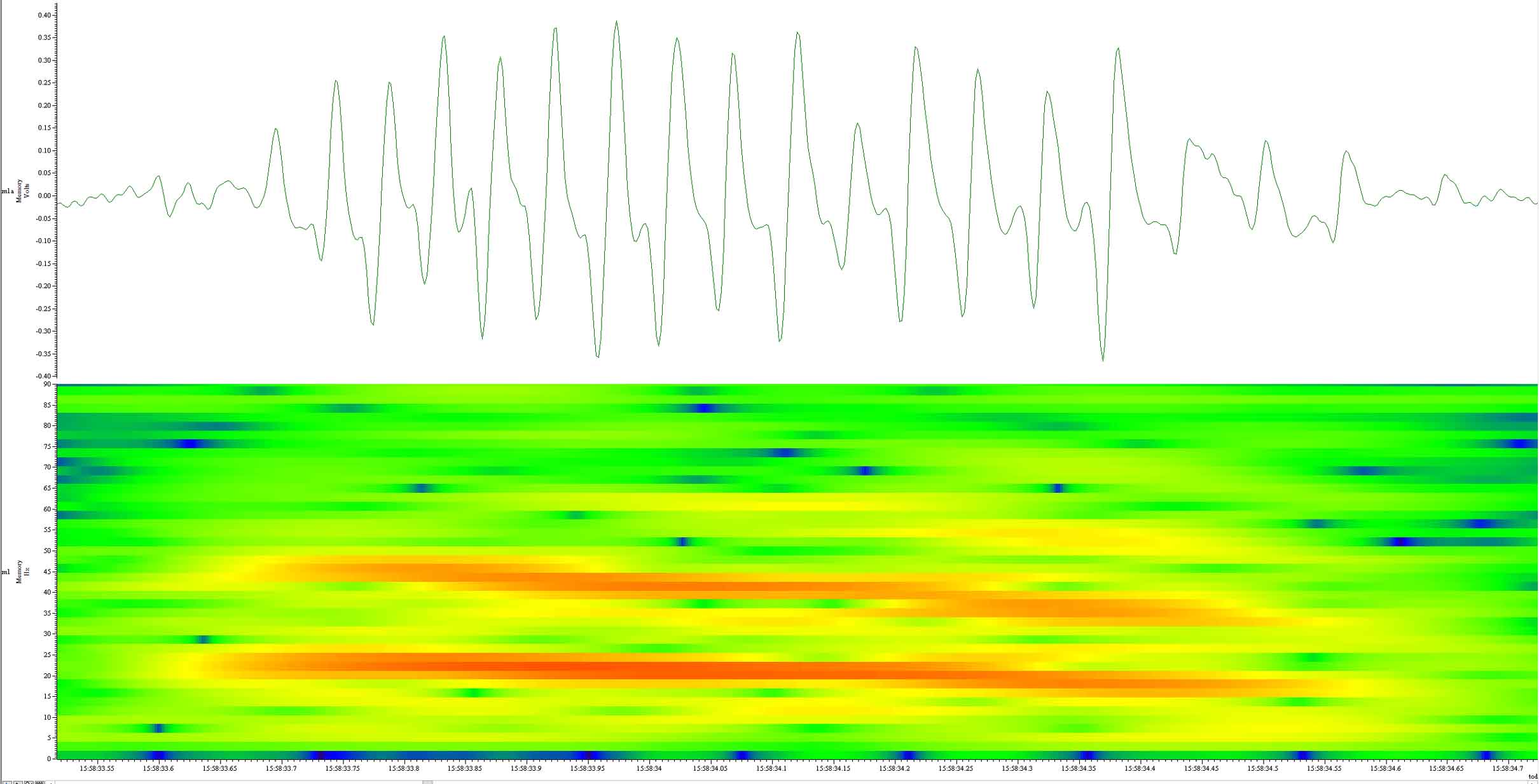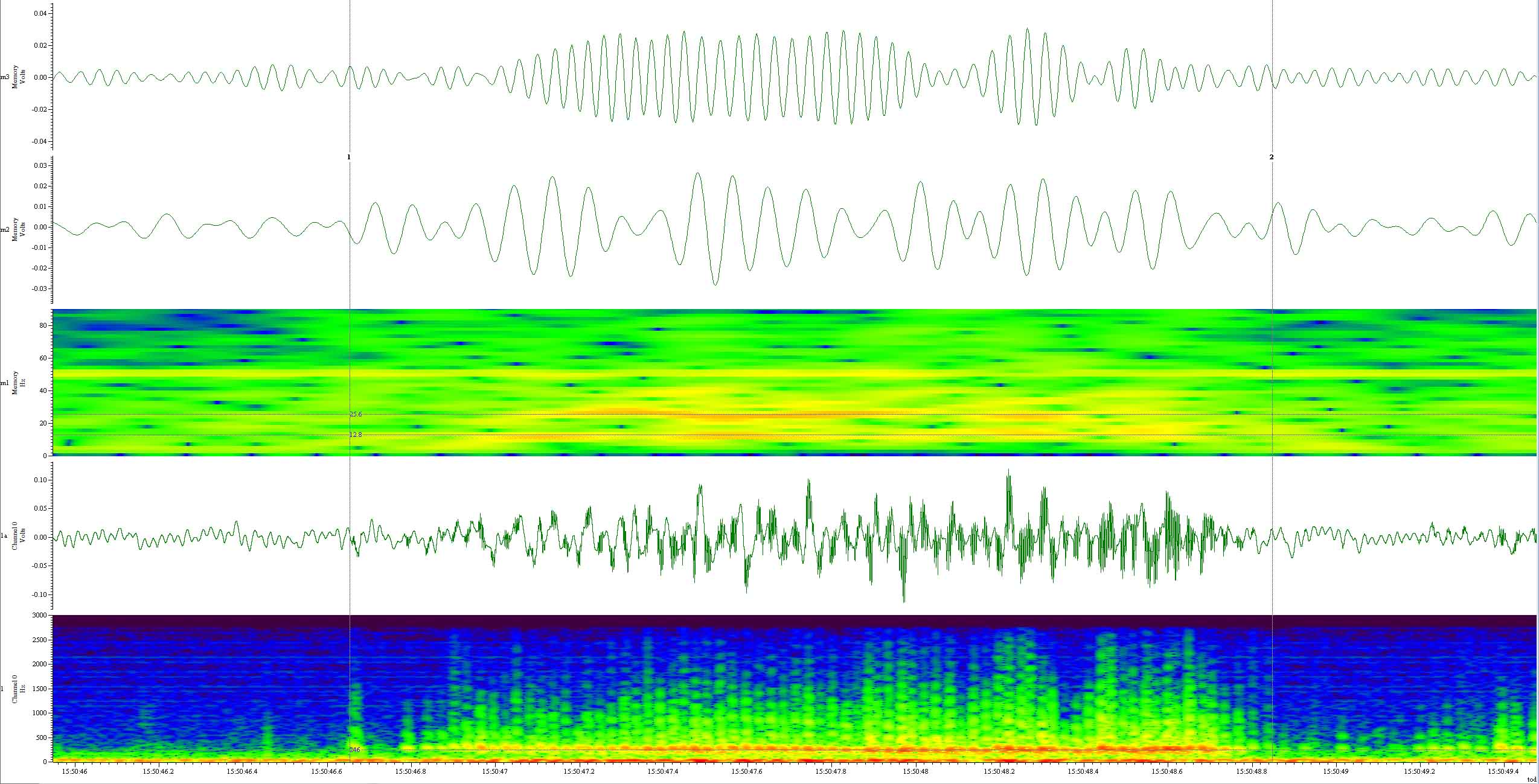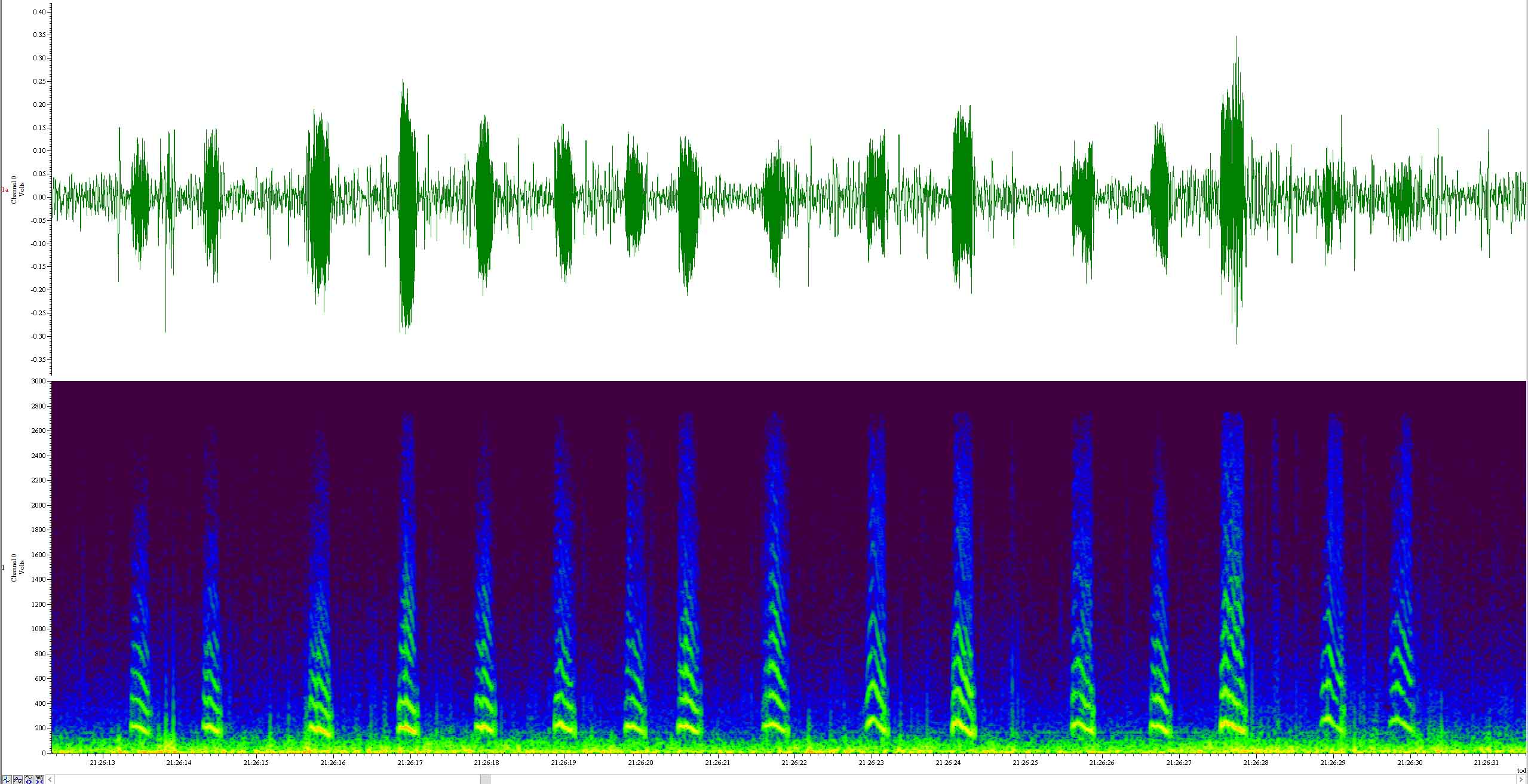FU Berlin | Neurobiology
Honeybee "pendulum dances "
Database: We were recording about 17 Million honeybees dance pattern in 2011 - 2017 in four different location.
The dancer's waggle run is coding the vector to the food source with respect to the azimute of the sun during the time course of the day.
The dance follower reads the waggle run pattern modulated by the Pendulum and stores the vector message in its cognitive map memory.
The vector message finds it's way into different parts of the memory by using the pendulum frequency as it's own address operator.
A fixed built in fourier network helps to address and compress the vector for the cognitive map memory. Using the same fourier network
in a reverse mode helps to rebuilt the time series of the original dance pattern which allows the recruit turn into a dancer itself.
|
Note: The voltage scale reflects the preamplifiers output and gives a fraction of the bees voltage. The frequency scale is limited to 3000 Hz of the 44Khz/24bit audio
signal. The digitally filtered low frequency response is plotted on top of each sonogram to display and emphasize the abdomen movements. The sonograms
reveal the pronounced harmonics which enhance the redundancy of the base frequency.
|
 |
pendulum
dance
|
Vibrating "Octave" bees: Honeybees dancing for a rich food source like trees or even the high rewarding feeder in our experiments use their wings for whirring
additionally to the waggling of their abdomen. Now the hanging pendulum, the inverse pendelum and the wing vibrations effect the elasticity and forces of the
legs keeping the dancer in position on the frame. The frequency response from both pendula is now swinging from the lowest frequency to the highest
frequency which marks the "Octave" like a very strong "Vibrato" well known in string instruments. The fourier network resolves all three frequency
components and stores the vector for rich food sources in different spaces of the cognitive map memory colocateted to the normal vector information.
|
 |
vibrating
"Octave" bees
|
Beep and stop tones: Worker bees transmit sounds in the range of 200 to 500 Hz and a duration of 200 to 500 ms during the time course of the day even at night.
The mechanism of its production is unknown as well as its function in the social context is not properly explained.
Due to the higher frequency these sounds may be also a strong component of the communication by air velocity.
Again the pronounced harmonics enhance the redundancy of the base frequency.
|
 |
beep and stop tones
of worker bees
|
Downward and upward loops are coded differently. Each waggle run is followed by a loop downwards or upwards. When the bee starts to waggle, the mean frequency is adjusted during the first 180 milliseconds. This is followed by a sustained waggling phase which mainly codes for the distance to the food source. The stop phase is affected by the bee's preparation for the next loop downwards or upwards. Because the bee is already turning its body axis, the pendulum mechanism causes the frequency to drop more sharply for a downward loop than for an upward loop.
1 |
|